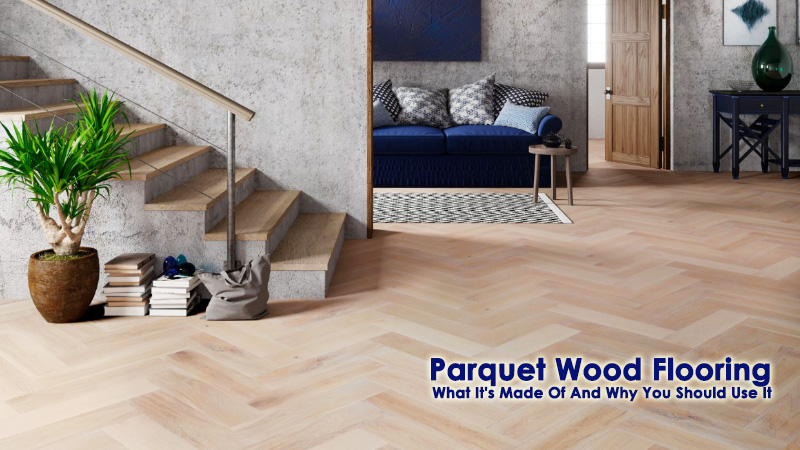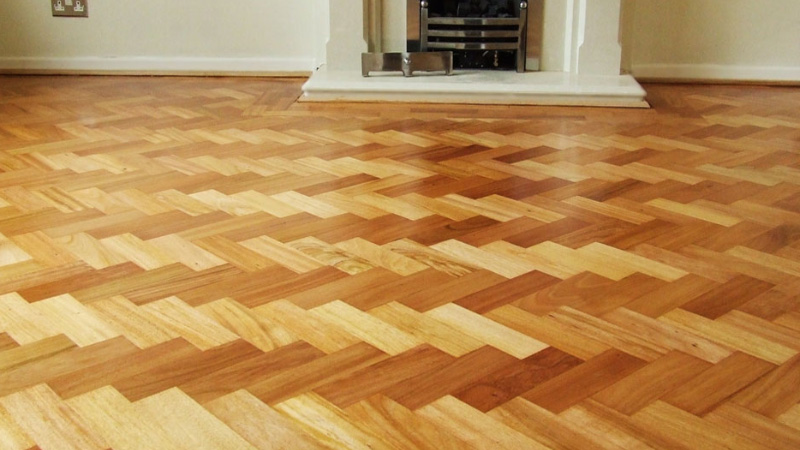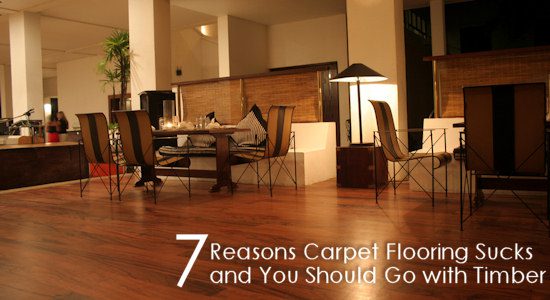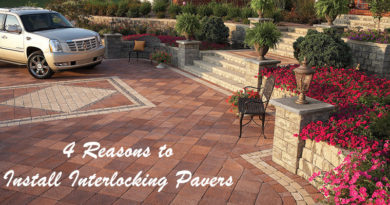Parquet Wood Flooring: What It’s Made Of And Why You Should Use It
If you find yourself interested in parquet wood flooring, then you are probably considering to change your flooring design into something stylish, eye-catching and authentic. Well, that may definitely be the right choice to make, but still, there are certain things that you need to know about this marvelous style of hardwood flooring.

Origin of Parquet Flooring
Parquet wood flooring has its origins in ancient France, particularly in the 17th Century. Its name is derived from the French word, ‘parchet’. Cheap homes tended to have plain wooden floors that were systematically arranged. Even though the main reason for this was because of their convenience in terms of cost, this type of flooring gradually evolved to become something admirable. It replaced marble, slate and limestone floors that were mainly used by the royal family and the wealthy Frenchmen.
Unlike parquet floor, marble slabs-and other notable materials-eventually proved to be costly not just in maintenance but their constant washing led to the rotting of the joists. This perhaps, its why its popularity increased in the market. Nowadays, this type of floor design is not only used in homes but also in bars, restaurants and professionally styled lobbies as well.
Manufacture and Construction
It is basically made of various types of wood with varying grains. However, some of the common species include; walnuts, oak, maple, and cherry. Mahogany and other exotic hardwoods are only used in the production of much more expensive forms of parquets.
All in all, there is a big difference between parquets flooring and other ordinary wood floors. The ordinary wood floors use wood planks that are about 10cm wide and one-meter-long. On the other hand, parquet comprises of smaller pieces of wood which are placed in a more attractive manner with regular geometric shapes and patterns. Some of the designs include herringbone, chevron, chequerboard, and basket weave.
Herringbone, is no doubt, the most popular of them all. It is regarded as the classic style of parquet. It resembles a broken zigzag pattern or fish skeleton. No wonder it is also termed as fishbone flooring.
The chevron pattern follows next in popularity. It has a simple yet appealing V-shape pattern similar to the one in pottery and rock carvings. It is regarded as an effective method of making a smaller room appear bigger than it is, or rather, make an optical illusion that it is wider or longer. That is why it is most common among owners of smaller houses.
Still, under manufacturing, you need to keep in mind that there are two forms of parquet flooring; engineered or solid. The latter is made up of solid pieces of timber while the engineered version is simply layers of wood with the hardwood veneer at the top. But then again, whether you go for either of them, there is no difference in the final appearance once skillfully fitted.
Why you should go for Parquet flooring
One of the obvious reasons why you should go for this type of floor is simply its beauty. The polished wood touch and the sensational visual effect it provides would definitely be appealing to you as it is to your visitors.

But that is not all, with the touch of modern-day technology, new improved materials last even longer compared to earlier series.
There are also plenty of designs and patterns to go for. Unlike other floor designs where you are just confined to particular styles and colors, the versatility in parquet floors allows you to have a unique and conspicuous mosaic in your house or a pattern of your choice. Being hardwood as well, you can definitely mix and match with your set of furniture to generate an amazing interior design.
Of course, the price also plays a significant role in your choice. Despite being vintage, attractive and authentic, parquet floors are incredibly affordable. With the shipping and installation charges included, you might still find yourself saving money! And in the event where you happen to sell your house, this type of floor may actually boost its value if well taken of. What more can you ask for!
The cost of maintenance is usually the concern that runs in people’s minds. But there is nothing to worry about, by using a vacuum cleaner and simple wooden wipes you to clear off the dust on the surface, you are good to go. Nevertheless, you should avoid using abrasive wipes as they may destroy the beautiful surface.
Keep in mind, that parquet floors are made from hardwood of various strong and durable trees. They can not only withstand the pressure of being the base of the house but also be resistant to insect infestation.
Tips on maintaining you Parquet Floors
Maintaining this type of floor is never a daunting task. Nonetheless, there are certain crucial factors that you need to take into consideration when handing it. Below are some of them;
Moisture
Wood and moisture never go hand in hand. When exposed to humid, wood is easily damaged. In as much as modern parquet floors are made with technology that improves moisture resistance, you still need to minimize spills on the floor.
When mopping the floor or wiping spills it is always advisable to use a damp cloth or mop instead of a wet one. This simply minimizes the amount of moisture exposed to the floor. In addition, ensure you wipe spills as soon as possible. During humid and wet seasons, on the other hand, wiping the floor frequently with a dry cloth ensures it remains dry.
Protection from physical damage
Generally, parquet floors are exposed to physical damage when heavily used. It’s the leading cause of rapid aging and wearing out. And so, taking care of them includes, tilting or even carrying your furniture when moving them in the house rather than dragging them on the floor. Similarly put felt pads on the base of movable furniture to protect the parquet surface. Do not walk on the floor with sharp-heeled shoes if you do not want to scratch the floor surface. Finally, place rugs in areas that incur high traffic to minimize pressure on them.
Cleaning
The cleaning technique employed basically depends on the material used on the wood finishing. Floors with a polyurethane finish, simply mopping or using a special hardwood cleaner on weekly basis will do the trick. But then again, this also depends on the frequency of its usage. If it is used more, you will have to clean it often as well.
On the other hand, flooring with either varnish, shellac and lacquer finishing, you will be needing a special wax to gloss the surface with, using a soft cloth. This can be done on monthly basis.
Stain Removal
Stains are common on floors, especially those whose spills are never dried on time. When handling spills’ stains, apply a non-abrasive cleaner using a soft cloth on that surface and rub gently. To get rid of marks left by hard objects, you will need a cleaner, fine steel wool and a special wax suitable for parquet flooring. Using the cleaner and the steel wool buff lightly then apply the wax on that surface.
Renovating parquet flooring
When your floor starts to wear and tear, you can still bring it back to life by touching up and refreshing its appearance. This can be done by using a touch-up stick that has special wax to repair marks on the surface. It also comes in various colors that match different floors for an exquisite appearance. After applying the wax, you can finish it off by buffing that region.
Professional Maintenance
It is also advisable to have an expert within reach as you will benefit a lot from their experience, knowledge, and services. They may help you avoid damaging your floor. However, always go for the best and trustworthy.
How to Install Parquet
When it comes to the installation of the parquets, seeking the services of trained personnel is normally regarded as the right move. But for those highly capable and inquisitive DIY men, there is a procedure on how to skillfully install parquet in your home without much of a fuss. The following is the guideline;
Things you need;
- Floor Leveling compound
- Belt sander
- Vacuum
- Damp cloth
- Tape measure
- Chalk line
- Carpenter’s square
- Parquet tile adhesive
- Notched Trowel
- Jigsaw
- Floor roller
- Orbital Flooring sander
- Palm sander
- Clear polyurethane finish
- Foam applicator
- Floor buffer
- 120-grit sanding screen
- 80-,100-,120-grit sandpaper
The first step is to remove any paint, sealants, wax, adhesives and any sort of debris on the surface. Vacuum the subfloor and wipe it with a damp cloth. The subfloor should be completely dry and clean before beginning the exercise.
Next, you need to ensure the ground is level. Therefore, use a belt sander to sand any high areas as well as filling the sunken regions with cement leveling compound. The subfloor needs to be level and smooth so that the overlaid parquet can be smooth.
Use a tape measure and a marker to indicate the center of each wall then draw straight lines connecting the opposite sides of those walls. Use a carpenter’s square to ensure the lines are perpendicular to one another. The distance should also be twice the width of the tile plus a ¼-inch gap for expansion.
Lay the parquet tiles down on the subfloor. You need to start from the center where the perpendicular chalk lines intersect. Do not apply adhesive just yet.
In order to fit appropriately, cut the last tiles using a jigsaw. Take into account that the tiles are woven together with a metal wire and they can easily catch the saw blades when using a table or circular saw, hence avoid such tools. On the same note, do not forget to include the expansion gap when you are measuring the cuts.
Now use a notched trowel to apply enough adhesive on the subfloor in the area covered by the first tile. Ensure the notched trowel is held at an angle of 45 degrees. The tile needs to be aligned with the chalk lines.
The adhesive should be enough as you lay the next eight panels on both sides of the first panel. While holding the parquet tile at a 45-degree angle, align the tongue and grove between the new and the adjacent tile which is already placed on the subfloor and knock lightly into place with a rubber mallet. Once they are in place and aligned, lay the new tile into adhesives.
Repeat applying spaces of adhesives and laying parquet tiles until all except the last rows of parquet tiles have installed.
The tiles in the last rows need to be properly and accurately cut with a jigsaw to fit into their respective spaces. Thereafter, roll the flow with a weighted roller of about 150 pounds once installation is completed.
Take into account that if the subfloor is concrete, then it should not have more than three percent moisture content. The best way to confirm this is by placing a tape plastic sheeting to the floor, then wait for a day before removing it. If there is condensation on the sheet or the floor has somehow darkened, then you need to dry it even more.
While if the floor is made of wood, it must be thick enough just like the tiles, for it to be stable. Normally, a thickness that is ¾ inches is considered suitable.
Parquet wood flooring should be your number choice if you are looking for a classic interior design with a touch of modern culture. It is not only appealing to the eye but also affordable as well. This is mainly attributed to the latest technology that makes it cheaper and equally attractive to anyone interested in it.
With the right use of creativity, it can be used in almost any setup, whether it’s a restaurant, ballroom, basketball court or even in a small room in your house. It has also proven to be durable since the strong tree is the one commonly used for its hardwood.



